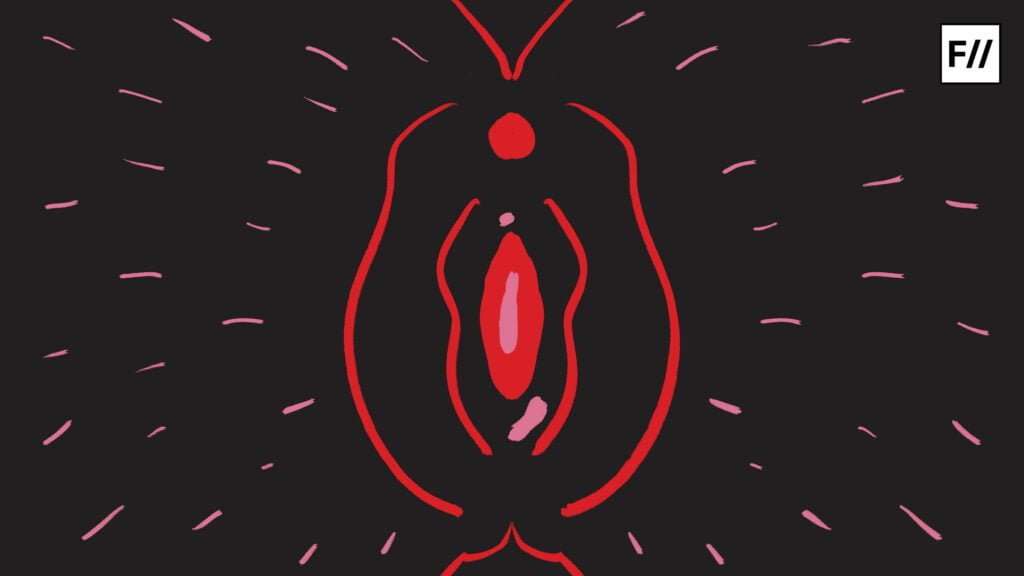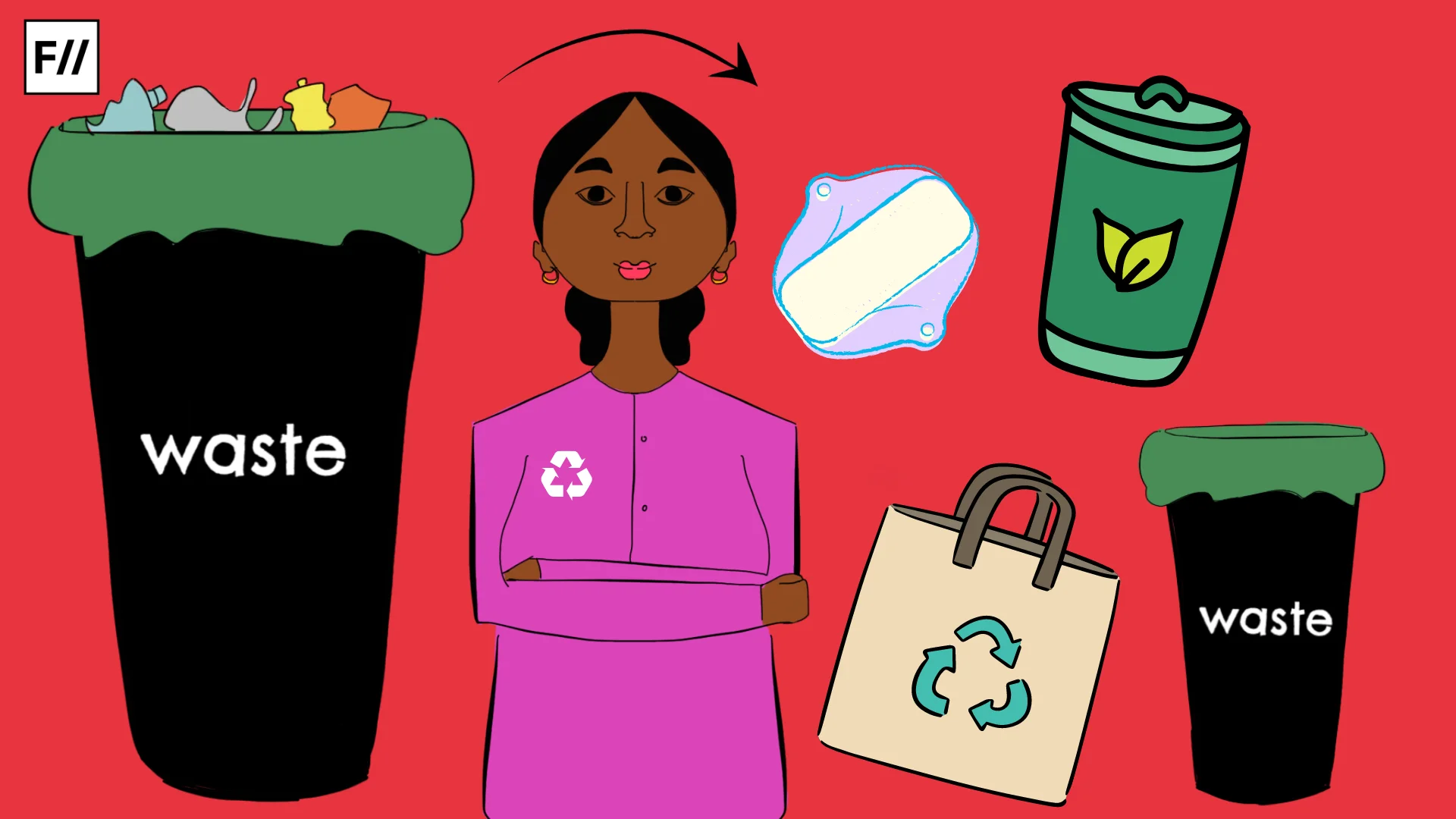The patriarchal force has always idealised a clean, pure and beautiful body. This, in turn, heavily influences the thought process of the menstruators as well as the society in general. In the current article, the term ‘menstrual pad’ has been used instead of ‘sanitary pad’ to strike the chord of the readers. The term ‘sanitary pad’, however, is associated with something to do with sanitation, which cleans. Historically, menstrual blood has been associated with notions of impurity in the socio-cultural and religious context. As capitalism took over the world, this association of menstrual blood with impurity was immediately seen as a fertile ground for patriarchal marketing tactics to introduce “feminine hygiene and sanitary” products.
One can see that there is now a ready influx and acceptance of a wide range of creams, perfumes, serums, masks, and cleansers for the vagina, which could in fact, be harmful for the body. Interfering with the pH levels of the vagina is not considered a healthy practice, and often the products that are widely advertised as meant for feminine hygiene tend to do exactly that. Then, how are these products gaining popularity? Patriarchy ensures that women’s bodies are subjected to the male gaze in such a way that only demure and petite bodies of women are found as conventionally acceptable, which in turn, leads to an amplification of body image issues among women. And because menstruation continues to be associated with stigma and taboo, there has not been wide knowledge dissemination on the same. The truth is that all a menstruator needs is clean water for cleaning the vagina, vulva and the groin area. Unlike what popular culture and misleading advertisements want us to believe, the vagina is supposed to smell and look in a certain way. Instead of attempting to further aggravate body image issues associated with personal hygiene, it is time that menstrual healthcare and menstrual products tap into how a menstruating body could be ensured to be healthy.
Also read: Infographic: 6 Things To Remember While Using Sustainable Menstrual Products
Unlike what popular culture and misleading advertisements want us to believe, the vagina is supposed to smell and look in a certain way. Instead of attempting to further aggravate body image issues associated with personal hygiene, it is time that menstrual healthcare and menstrual products tap into how a menstruating body could be ensured to be healthy.


Instead of self diagnosing and self medicating, it is important that menstruators are provided safe and judgment-free access to reproductive healthcare services that could further prescribe what kind of menstrual products to use. It is important to ensure that more and more discussions on sustainable and safe menstruation takes place with primary stakeholders (menstruators) at the helm of these conversations. These discussions should definitely not be limited to what kind of menstrual products to use in the long run. Instead, it should also emphatically talk about access, availability of WASH facilities, mobility of menstruators and the state and the community’s role in ensuring safe and sustainable menstruation. Menstruators must be made aware of how not all menstrual disposable pads should be considered harmful for health as some disposable pads are made up of cotton and organic absorbents which are body-friendly and how everyone must use products that they can wield complete bodily autonomy over. For instance, new age influencers who swear by menstrual cups should not be seen as the ideal flagbearers of sustainable menstruation, as many menstruators might find the inserting of the cup or a tampon a harrowing and invasive process.

The notion behind referring to menstrual blood as dirty is not untouched by patriarchy, which is often shown in an empathetic way in advertisements, almost as if the menstruator wants to be saved from the ’embarrassment’. The description or the image of blood in the context of menstruation is very problematic, which in turn hampers the body positivity of the menstruators. Often, menstruators are made to feel that the odour of the menstrual blood is so bad that they need a scented pad for fragrance.
Coming back to the ideas of purity and a menstruator’s body, the notion behind referring to menstrual blood as dirty is not untouched by patriarchy, which is often shown in an empathetic way in advertisements, almost as if the menstruator wants to be saved from the ’embarrassment’. The description or the image of blood in the context of menstruation is very problematic, which in turn hampers the body positivity of the menstruators. Often, menstruators are made to feel that the odour of the menstrual blood is so bad that they need a scented pad for fragrance. In an article by Acharya in Blog by Nua titled “What do you know about scented pads” it is mentioned the way pads with fragrance are not good for the health of the menstruators. Based on informal conversations with many menstruators and an Instagram poll on the question: Do you find the smell of the menstrual blood good when it falls on your scented disposable pads?, it was inferred that most of the participants do not like the smell of the menstrual blood when it mingles with the flowery fragrance of scented disposable pads. In addition to it, the composition behind the making of these menstrual disposable pads are not disclosed when there could be usage of harmful chemicals to bring in a particular odour to the menstrual pad. There is a need to have certain parameters to maintain the quality of disposable pads in India. Since harmful chemicals are used in the making of disposable pads. It should be categorized as a medical device.
The Bureau of Indian Standards set out standards for disposable sanitary pads (IS 5405), but these have not been enforced yet. As a result, sanitary pads are more widely available through different channels, but their quality varies greatly. The Bureau of Indian Standards, 1980 specifies tests that are very basic to know whether the chemicals used in the disposable pads are harmful to the menstruators. In addition, the government does not pay heed to the quality of the pad as the quality certification of the manufacturers still follows 1980 guidelines.
India’s health ministry came up with a new definition of medical devices from 1st April 2020 which was applied to all the medical devices from the day onwards but menstrual products are not added to the list yet. In addition to it, another article talks about a proposal by Central Drugs Standard Control Organisation (CDSCO) for a new risk-based classification list according to Medical Device Regulation 2017. It was to include menstrual pads, cups, tampons, fertility, conception software, birthing bath, and newborn infant beds in risk based category. The proposal was to ensure that the regulatory pathways and requirements are well-defined for each of the now notified devices. However, nothing much could be found on the implementation part of the proposal. In addition, no document could be retrieved which defines or accepts menstrual products as a medical device following the new definition of the Health Ministry in India.
Sabna ES is a menstrual researcher and PhD scholar from National Institute of Advanced Studies, Bangalore. She has initiated Project Sakhi Saheli with other students from Delhi School of Social Work in 2019. You can find her on Instagram, Facebook and LinkedIn.
Featured image source: Shreya Tingal/Feminism In India




